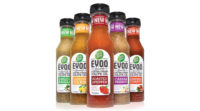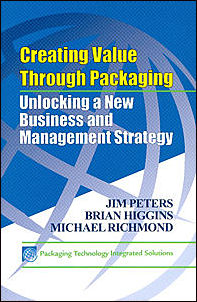Dressing Up Packaging For Consumer Electronics
![]()
By Tamara E. Holmes
Women purchase more than half of all high-tech gadgets. Branding tactics and packaging designs shift to attract female shoppers.
Think of consumer electronics products. The core target audience is male computer geeks in their twenties, right? Wrong. Women make up the majority of buyers.
“It has traditionally been a business that has a lot of brown boxes, especially for larger equipment,” says Hayes Roth, Vice President for Worldwide Marketing and Business Development at Landor Associates, a brand-consulting firm. “It was always about the latest widget you could get—what new bells and whistles we could add onto this box that could give us a competitive edge.”
Today that is all changing. A recent study by the Consumer Electronics Association underscores the shift in the marketplace as marketers are re-evaluating the power of the female consumer and coming up with new ways to make their product packaging more appealing to women.
“More and more women are comfortable with technology and certainly purchasing it,” says Anne-Taylor Griffith, Communications Specialist for the Consumer Electronics Association. The organization found that women spent $55 billion on consumer electronics last year. Since the industry raked in $96 billion in total, women accounted for more than half of the dollars spent.
To take advantage of this growing audience, consumer electronics companies are redressing their packaging to attract female shoppers.
The main audience “isn’t just guys who are gearheads,” Roth says. Retailers know those days are over from a mass-marketing standpoint. So the new challenge is coming up with ways to appeal to women before their decision to purchase.
One company at the forefront of targeting women is Eastman Kodak.
Picture this: Female Buyers
“We decided about three years ago that we were going to target women with everything that we were developing on the digital camera side because in the film world, 70 percent of the pictures taken are by women,” says Nancy Carr, Director of Worldwide Advertising and Vice President of Kodak’s Digital and Film Imaging Systems division.
To attract the eye of female shoppers, Kodak sought to make the packaging appealing to mothers.
“If you go into a store and look at our packaging, whether it’s on our digital cameras or our printer docks or even our inkjet paper, you will see a lot of the imagery is moms with kids,” Carr says. “Children, mothers doing things, the soccer moms of the world, kids being kids—the imagery is placed there specifically to attract her.”
Indeed, one of the ways consumer electronics unwittingly alienated female shoppers with their packaging in the past was by “having pictures of guys on the package as opposed to women,” Roth says.
By using images that female consumers could relate to, Kodak has managed to teach women that they can get as much out of the cameras as men.
While images are one of the most noticeable ploys brand packagers use to target women, the text itself has become a selling point as well, in many cases.
Word choice is particularly important to women. The Consumer Electronics Association found that women are more influenced by a product’s ease of use than are men, so marketers have made a point of featuring words that connote ease of use and keeping the text as user-friendly as possible.
Speak Her Language
“We talk about photography in her terms instead of consumer electronics terms,” Carr says. “So, for example, when we line up our digital cameras, we don’t say ’mega pixels,’ we say ’prints up to’ so she understands that a 3 mega pixel would be an 8 x 10 print, a 5 or 6 mega pixel would be a 14 x 20 print. So even in our language, we try to give her signals that we understand her predicament in not understanding the consumer electronics world. We also use the words ’ease of use.’ ”
Kodak was so in tune with creating a package that suggested simplicity that it created the logo and a product line to go with it called “EasyShare” in 2001 to let women know that its products didn’t require an engineering degree to use.
While the choice of text is important, the size and presentation of the words can also give consumers the impression that a particular product is easy to use.
The main reason size is important is because there tends to be a lot of information on consumer electronics products, Carr says. As a result, the words that are given the most real estate need to be the ones that make women comfortable with their ability to understand and use the product.
“The number of sheets in the package of paper is more important than the technology on the back,” Carr says. As a result, the number of sheets is designated in larger letters, leaving the more technical details to the package’s fine print.
Apple Computer succeeded in taking the message of simplicity to another level with its iPod digital music player.
“There’s not a single description of what it is, what it does, or how it works anywhere on the outside of the package,” Landor Associates’ Roth says. “They leave that to their advertising.”
Avoid ’Stereotype’ Colors
While women are likely to read the details of a package before buying it, perhaps the first element of packaging they’re bound to notice is the color scheme. However, this is also the area where consumer electronics companies are most likely to make the mistake of stereotyping the preferences of female consumers.
For Parham Santana, a branding agency that created the packaging for a line of products geared toward women for Discovery Communications, focus groups with women revealed that pastel colors, which are often thought to be popular with women, actually were low on the list of colors group participants chose to identify with.
“The colors that came to their minds were clean colors,” says Maruchi Santana, Executive Creative Director for Parham Santana. “A bright orange. A clean blue. A crisp white. We had other palettes that had more jewel tones like deep burgundies and deep greens. Those were definitely not attractive to them. And we also had a palette that was pastel. They didn’t want to be stereotyped on that category because not all women are pastel.”
Color also influences the impact of a point-of-purchase display.
Consumer electronics retailer Best Buy has been trying to make its stores more appealing to women for the last few years, according to Consumer Marketing Director Bart Reed. One of the ways the company does so is by using images and colors on the store’s signs that reflect a more diverse audience.
Consumer electronics retailer Best Buy has been trying to make its stores more appealing to women for the last few years, according to Consumer Marketing Director Bart Reed. One of the ways the company does so is by using images and colors on the store’s signs that reflect a more diverse audience.
“We try to represent a great deal of diversity, whether it’s older or younger people, whether it’s family situations and women, whether it’s technology in the home or outside of the home,” Reed says. “So through that we are certainly trying to show women and their families using technology products together.”
Say it With Shape
The package shape also can make a product more aesthetically pleasing.
Glen Ridge, N.J.-based Smith Design created packaging for a line of flashlights for Panasonic that employed the use of curves.
“The client wanted a design that would appeal to women,” says Martha Seidner Gelber, Vice President of Smith Design. “Our approach was a very unique shaped card—a very organic design with a lot of curves. Graphics included usage icons to help differentiate each flashlight.”
As consumer electronics companies continue to target women with their products, they are making sure they don’t alienate men.
“We are not saying at all that it is just for women,” Santana says. “It just visually attracts them. It’s really a fashion-forward-looking product and packaging. So if you’re in that frame of mind and you’re a man, that’s fine.”
The author Tamara E. Holmes, is a freelance writer who specializes in business and technology issues.
Contact her at:maraholmes@aol.com
Contact her at:maraholmes@aol.com
Package design appeals to women, but stays true to retailer’s brand
When Discovery Communications sought to package its “Tools for Life” products to appeal to female consumers, it didn’t want to stray too far away from the signature style of the other items in its Discovery Channel retail stores.
So the company turned to New York-based Parham Santana to create a package design that would appeal to women but would not lose the modern, cutting-edge feel of other packaging in the store.
“We did some small focus groups,” says Scott Eichler, Vice President of Product and Creative Development for Discovery. “One of the things that we came up with was that women were saying to us, ’We like color. We respond to color. We want it to be fun and energetic.’ ”
So Parham Santana created packaging that utilized a lot of white space to give it a crisp and clean feel, and then sprinkled it with bright colors—oranges, limes and blues—in simple geometric shapes.
“We stayed away from the same old flowers and soft patterns,” Eichler says. “We latched onto energy, fun, colorful, contemporary.”
Parham Santana did use a modernistic version of a flower as an icon for the packaging. “The women’s packaging has what we call the infinite flower—sort of a ’techie’ flower,” says Maruchi Santana, Executive Creative Director for Parham Santana.
“It’s not something that you see immediately,” Santana says. Consumers first notice the bright and clean colors on the package. But the subtle flower pattern emerges and helps to identify the product line.
Where to Go For More Information...
© Package design services. At Parham Santana, contact Maruchi Santana at 212.645.7501, ext. 22 or maruchi@parhamsantana.com
Looking for a reprint of this article?
From high-res PDFs to custom plaques, order your copy today!






